Beurer PO 30 Handleiding
Beurer
Bloeddrukmeter
PO 30
Bekijk gratis de handleiding van Beurer PO 30 (2 pagina’s), behorend tot de categorie Bloeddrukmeter. Deze gids werd als nuttig beoordeeld door 80 mensen en kreeg gemiddeld 4.5 sterren uit 40.5 reviews. Heb je een vraag over Beurer PO 30 of wil je andere gebruikers van dit product iets vragen? Stel een vraag
Pagina 1/2

PO 30
Pulsoximeter
DEUTSCH
Sehr geehrte Kundin, sehr geehrter Kunde,
wir freuen uns, dass Sie sich für ein Produkt unseres Sortimentes entschieden haben. Unser Name steht für hochwertige und eingehend geprüfte
Qualitätsprodukte aus den Bereichen Wärme, Gewicht, Blutdruck, Körpertemperatur, Puls, Sanfte Therapie, Massage, Beauty, Baby und Luft.
Bitte lesen Sie diese Gebrauchsanweisung aufmerksam durch, bewahren Sie sie für späteren Gebrauch auf, machen Sie sie anderen Benutzern
zugänglich und beachten Sie die Hinweise.
Mit freundlicher Empfehlung
Ihr Beurer-Team
1. Lieferumfang
1x PO 30 Pulsoximeter, 2x 1,5 V AAA Batterien LR03 , 1x Umhängeband, 1x Gürteltasche, 1x Diese Gebrauchsanweisung
2. Bestimmungsgemäße Verwendung
Verwenden Sie das Beurer Pulsoximeter PO 30 ausschließlich am Menschen zur Messung der arteriellen Sauerstosättigung (SpO₂) des Hämo-
globins und der Herzfrequenz (Pulsfrequenz). Das Pulsoximeter eignet sich sowohl zur Verwendung im privaten Umfeld (zu Hause) als auch im
medzinischen Bereich (Krankenhäusern, medizinischen Einrichtungen).
3. Zum Kennenlernen
Das Beurer Pulsoximeter PO 30 dient der nichtinvasiven Messung der arteriellen Sauerstosättigung (SpO
2) und der Herzfrequenz (Pulsfrequenz).
Die Sauerstosättigung gibt an, wie viel Prozent des Hämoglobins im arteriellen Blut mit Sauersto beladen sind. Daher ist sie ein wichtiger Pa-
rameter für die Beurteilung der Atemfunktion. Das Pulsoximeter verwendet zur Messung zwei Lichtstrahlen unterschiedlicher Wellenlänge, die im
Gehäuseinneren auf den eingelegten Finger auftreen. Einem niedrigen Sauerstosättigungswert liegen überwiegend Erkrankungen (Atemweg-
serkrankungen, Asthma, Herzinsuzienz etc.) zu Grunde.
Bei Menschen mit einem niedrigen Sauerstosättigungswert kommt es vermehrt zu folgenden Symptomen: Atemnot, Herzfrequenzerhöhung,
Leistungsabfall, Nervosität und Schweißausbrüche. Eine chronische und bekannte erniedrigte Sauerstosättigung benötigt eine Überwachung
durch Ihr Pulsoximeter unter ärztlicher Kontrolle. Eine akut erniedrigte Sauerstosättigung, mit oder ohne Begleitsymptome, ist sofort ärztlich
abzuklären, es kann sich dabei um eine lebensbedrohliche Situation handeln. Das Pulsoximeter eignet sich daher insbesondere für Riskopati-
enten wie Personen mit Herzerkrankungen, Asthmatiker, aber auch für Sportler und gesunde Personen, die sich in großen Höhen bewegen (z.B.
Bergsteiger, Skifahrer oder Sportflieger).
4. Zeichenerklärung
In der Gebrauchsanweisung, auf der Verpackung und auf dem Typschild des Geräts werden folgende Symbole verwendet:
WARNUNG
Warnhinweis auf Verletzungsgefahren oder Gefahren für Ihre
Gesundheit
Storage
Zulässige Lagerungstemperatur und
-luftfeuchtigkeit
ACHTUNG
Sicherheitshinweis auf mögliche Schäden an Gerät/Zubehör
Operating
Zulässige Betriebstemperatur und
-luftfeuchtigkeit
Hinweis
Hinweis auf wichtige Informationen Anwendungsteil Typ BF
Gebrauchsanweisung beachten Seriennummer
%SpO₂ Arterielle Sauerstosättigung des Hämoglobins (in Prozent) Die CE-Kennzeichnung bescheinigt die Konformität mit
den grundlegenden Anforderungen der Richtlinie 93/42/
EEC für Medizinprodukte.
PR bpm Pulsfrequenz (Pulsschläge pro Minute) Herstellungsdatum
Entsorgung gemäß Elektro- und Elektronik-Altgeräte EG-Richtli-
nie WEEE (Waste Electrical and Electronic Equipment) Alarmunterdrückung
Schadstoffhaltige Batterien nicht im Hausmüll entsorgen IP 22 Gerät geschützt gegen Fremdkörper ≥12,5 mm und gegen
schräges Tropfwasser
Hersteller
5. Warn- und Sicherheitshinweise
Lesen Sie diese Gebrauchsanweisung sorgfältig! Ein Nichtbeachten der nachfolgenden Hinweise kann Personen- oder Sachschäden verursa-
chen. Bewahren Sie die Gebrauchsanweisung auf und machen Sie diese auch anderen Anwendern zugänglich. Übergeben Sie diese Gebrauchs-
anweisung bei Weitergabe des Geräts.
WARNUNG
•
Überprüfen Sie, ob alle im Lieferumfang angegebenen Teile enthalten sind.
•
Überprüfen Sie das Pulsoximeter regelmäßig, um sicherzustellen, dass das Gerät vor dem Gebrauch keine sichtbaren Schäden aufweist und
die Batterien noch ausreichend geladen sind. Benutzen Sie es im Zweifelsfall nicht und wenden Sie sich an den Beurer-Kundendienst oder an
einen autorisierten Händler.
•
Benutzen Sie keine Zusatzteile, die nicht vom Hersteller empfohlen bzw. als Zubehör angeboten werden.
•
Sie dürfen das Gerät keinesfalls önen oder reparieren, da sonst eine einwandfreie Funktion nicht gewährleistet werden kann. Bei Nichtbeach-
ten erlischt die Garantie. Wenden Sie sich bei Reparaturen an den Beurer-Kundendienst oder an einen autorisierten Händler.
Verwenden Sie das Pulsoximeter
−
NICHT, wenn Sie allergisch auf Gummiprodukte reagieren.
−
NICHT, wenn das Gerät oder der Anwendungsfinger feucht ist.
−
NICHT an Kleinkindern oder Säuglingen.
−
NICHT während einer MRT- oder CT-Untersuchung.
−
NICHT während einer Blutdruckmessung auf der Armseite mit Manschettenanwendung.
−
NICHT an Fingern mit Nagellack, Beschmutzungen oder Pflasterverbänden.
−
NICHT an Fingern mit großer Fingerdicke, die nicht zwanglos in das Gerät einführbar sind (Fingerspitze: Breite ca. > 20 mm, Dicke ca. >15 mm)
−
NICHT an Fingern mit anatomischen Veränderungen, Ödemen, Narben oder Verbrennungen.
−
NICHT an Fingern mit zu geringer Dicke und Breite, wie sie zum Beispiel bei Kleinkindern vorkommen (Breite ca. < 10 mm, Dicke ca. < 5 mm).
−
NICHT an Patienten, die am Anwendungsort unruhig sind (z.B. Zittern).
−
NICHT in der Nähe von brennbaren oder explosiven Gasgemischen.
•
Bei Personen mit Durchblutungsstörungen kann eine längere Benutzung des Pulsoximeters zu Schmerzen führen. Verwenden Sie daher das
Pulsoximeter nicht länger als ca. 2 Stunden an einem Finger.
•
Das Pulsoximeter zeigt jeweils einen momentanen Messwert, kann aber nicht für eine kontinuierliche Überwachung verwendet werden.
•
Das Pulsoximeter verfügt über keine Alarmfunktion und eignet sich daher nicht zur Bewertung medizinischer Ergebnisse.
•
Führen Sie aufgrund der Messergebnisse keine Selbstdiagnose oder -behandlung ohne Rücksprache mit Ihrem behandelnden Arzt durch.
Setzen Sie insbesondere nicht eigenmächtig eine neue Medikation an und führen Sie keine Änderungen in Art und / oder Dosierung einer
bestehenden Medikation durch.
•
Schauen Sie während des Messvorgangs nicht direkt in das Gehäuseinnere. Das Rotlicht und das unsichtbare Infrarot-Licht des Pulsoximeters
sind schädlich für die Augen.
•
Dieses Gerät ist nicht dafür bestimmt, durch Personen (einschließlich Kinder) mit eingschränkten physischen, sensorischen oder geistigen
Fähigkeiten oder mangels Erfahrung und/oder mangels Wissen benutzt zu werden, es sei denn, sie werden durch eine für Ihre Sicherheit zu-
ständige Person beaufsichtigt oder erhielten von ihr Anweisungen, wie das Gerät zu benutzen ist. Kinder sollten beaufsichtigt werden, damit sie
nicht mit dem Gerät spielen.
•
Die Anzeige der Pulswelle sowie der Pulssäule, erlauben keine Abschätzung über die Puls- oder Durchblutungsstärke am Messort, sondern dienen
ausschließlich der Darstellung der aktuellen optischen Signalvariation am Messort, sie ermögliechen jedoch nicht eine sichere Pulsdiagnostik.
Bei Nichtbeachtung der nachfolgenden Anweisungen kann es zu fehlerhaften Messungen oder Messversagen kommen.
•
Auf dem Messfinger darf sich kein Nagellack, Kunstnagel oder andere Kosmetika befinden.
•
Achten Sie beim Messfinger darauf, dass der Fingernagel so kurz ist, dass die Fingerbeere die Sensorelemente im Gehäuse bedeckt.
•
Halten Sie Hand, Finger und Körper während des Messvorgangs ruhig.
•
Bei Personen mit Herzrythmusstörungen können die Messwerte von SpO₂ und der Herzfrequenz verfälscht sein oder die Messung ist gar nicht
erst möglich.
•
Das Pulsoximeter zeigt im Falle von Kohlenmonoxidvergiftungen zu hohe Messwerte an.
•
Um das Messergebnis nicht zu verfälschen, sollte sich in der unmittelbaren Umgebung des Pulsoximeters keine starke Lichtquelle (z.B. Leucht-
stoampe oder direkte Sonneneinstrahlung) befinden.
•
Bei Personen, die einen niedrigen Blutdruck haben, unter Gelbsucht leiden oder Medikamente zur Gefäßkontraktion einnehmen, kann es zu
fehlerhaften oder verfälschten Messungen kommen.
•
Bei Patienten, denen in der Vergangenheit klinische Farbstoe verabreicht wurden und bei Patienten mit abnormalem Hämoglobinvorkommen
ist mit einer Messverfälschung zu rechnen. Dies gilt insbesondere bei Kohlenmonoxidvergiftungen und Methämoglobinvergiftungen, welche
z.B. durch die Zugabe von Lokalanästhetika oder bei vorliegendem Methämoglobinreduktase-Mangel entstehen.
•
Schützen Sie das Pulsoximeter vor Staub, Erschütterungen, Nässe, extremen Temperaturen und explosiven Stoen.
Hinweise zum Umgang mit Batterien
•
Wenn Flüssigkeit aus einer Batteriezelle mit Haut oder Augen in Kontakt kommt, die betroene Stelle mit Wasser auswaschen und ärztliche
Hilfe aufsuchen.
•
Verschluckungsgefahr! Kleinkinder könnten Batterien verschlucken und daran ersticken. Daher Batterien für Kleinkinder unerreichbar aufbe-
wahren!
•
Auf Polaritätskennzeichen Plus (+) und Minus (-) achten.
•
Wenn eine Batterie ausgelaufen ist, Schutzhandschuhe anziehen und das Batteriefach mit einem trockenen Tuch reinigen.
•
Schützen Sie Batterien vor übermäßiger Wärme.
•
Explosionsgefahr! Keine Batterien ins Feuer werfen.
•
Batterien dürfen nicht geladen oder kurzgeschlossen werden.
•
Bei längerer Nichtbenutzung des Geräts die Batterien aus dem Batteriefach nehmen.
•
Verwenden Sie nur denselben oder einen gleichwertigen Batterietyp.
•
Immer alle Batterien gleichzeitig auswechseln.
•
Keine Akkus verwenden!
•
Keine Batterien zerlegen, önen oder zerkleinern.
6. Gerätebeschreibung Displaybeschreibung
Funktionstaste
Umhängeband-
Halterung Fingerönung
1. Sauerstosättigung (Wert in Prozent)
2. Pulsfrequenz (Wert in Pulsschläge pro .
Minute)
3. Pulswelle ( Plethysmografische Welle)
4. Pulssäule
5. Batterieanzeige
7. Inbetriebnahme
7.1 Batterien einlegen 7.2 Umhängeband befestigen
Sie können zum einfacheren Transport des Pulsoximeters ein
Umhängeband am Gerät befestigen.
1
. Schieben Sie die
Abdeckung des Bat-
teriefachs auf.
2
. Legen Sie die zwei
mitgelieferten Batterien
wie abgebildet (mit der
korrekten Polung) in das
Pulsoximeter.
3
. Schließen Sie
die Abdeckung
des Batterie-
fachs wieder.
1
. Schieben Sie das schmale
Ende des Umhängebands
wie abgebildet durch die
Halterung.
2
. Ziehen Sie das andere Ende
des Umhängebands durch
die Schlaufe des schmalen
Endes fest an.
8. Bedienung
98
65
%Sp O
2
PRbp m
1
. Schieben Sie einen Finger wie abgebildet
in die Fingerönung des Pulsoximeters.
Halten Sie den Finger ruhig.
2
. Drücken Sie auf die Funktionstaste. Das
Pulsoximeter beginnt zu messen. Bewegen
Sie sich während des Messvorgangs nicht.
3
. Auf dem Bildschirm erscheinen nach weni-
gen Sekunden Ihre Messwerte.
Hinweis
Wenn Sie Ihren Finger aus dem Pulsoximeter herausziehen, schaltet sich das Gerät nach ca. 5 Sekunden automatisch aus.
Funktionstaste
Die Funktionstaste des Pulsoximeters hat insgesamt drei Funktionen:
•
Einschalt-Funktion: Wenn das Pulsoximeter ausgeschaltet ist, können Sie es durch kurzes Gedrückthalten der Funktionstaste einschalten.
•
Anzeige-Funktion: Um Ihr gewünschtes Display-Anzeigeformat (Hochformat, Querformat) einzustellen, drücken Sie während des Betriebs kurz
die Funktionstaste.
•
Helligkeits-Funktion: Um Ihre gewünschte Display-Helligkeit einzustellen, halten Sie während des Betriebs die Funktionstaste länger gedrückt.
12
3
4
5
98
65
%SpO
2
PRbpm
9. Messergebnisse beurteilen
WARNUNG
Die nachfolgende Tabelle zur Beurteilung Ihres Messergeb-
nisses gilt NICHT für Personen mit bestimmten Vorerkrankun-
gen (z.B. Asthma, Herzinsuzienz, Atemwegserkrankungen)
und bei Aufenthalten in Höhenlagen über 1500 Metern. Wenn
Sie unter Vorerkrankungen leiden, wenden Sie sich zur Beur-
teilung Ihrer Messwerte immer an Ihren Arzt.
Höhenabhängiger Sauerstosättigungabfall
Hinweis
Die nachfolgende Tabelle informiert Sie über die Auswirkungen unterschied-
licher Höhenlagen auf den Sauerstosättigungswert sowie deren Folgen für
den menschlichen Organismus. Die nachfolgende Tabelle gilt NICHT für Per-
sonen mit bestimmten Vorerkrankungen (z.B. Asthma, Herzinsuzienz, Atem-
wegserkrankungen etc.). Bei Personen mit Vorerkrankungen können Krank-
heitssymptome (z.B. Hypoxie) bereits in niedrigeren Höhenlagen auftreten.
Messergebnis SpO₂
(Sauerstoffsättigung)
in %
Einstufung / Zu treende Maß-
nahmen Höhenlage Zu erwartender
SpO₂-Wert (Sauer-
stoffsättigung) in % Folgen für den Menschen
99-94 Normalbereich 1500-2500 m > 90 Keine Höhenkrankheit (in der
Regel)
93-90 Erniedrigter Bereich:
Arztbesuch empfohlen 2500-3500 m ~90 Höhenkrankheit, Anpassung
empfohlen
< 90 Kritischer Bereich:
Dringend Arzt aufsuchen 3500-5800 m <90 Sehr häufiges Auftreten einer
Höhenkrankheit, Anpassung
zwingend erforderlich
5800-7500 m <80 Schwere Hypoxie, nur zeitlich
begrenzter Aufenthalt möglich
7500-8850 m <70 Sofortige akute Lebensgefahr
Quelle: Hackett PH, Roach RC: High-Altitude Medicine. In: Auerbach PS (ed): Wilder-
ness Medicine, 3rd edition; Mosby, St.Louis, MO 1995; 1-37.
10. Reinigung / Instandhaltung
ACHTUNG:
W
enden Sie am Pulsoximeter keine Hochdruck-Sterilisation an!
Halten Sie das Pulsoximeter auf keinen Fall unter Wasser, da sonst Flüssigkeit eindringen kann und das Pulsoximeter beschädigt wird.
•
Reinigen Sie nach jeder Anwendung das Gehäuse und die gummierte Innenfläche des Pulsoximeters mit einem weichen, mit medizinischem
Alkohol angefeuchteten Tuch.
•
Wenn auf dem Display des Pulsoximeters ein niedriger Batteriestand angezeigt wird, tauschen Sie die Batterien aus.
•
Wenn Sie das Pulsoximeter länger als einen Monat nicht benutzen, entnehmen Sie beide Batterien aus dem Gerät, um ein eventuelles Auslau-
fen der Batterien zu verhindern.
11. Aufbewahrung
ACHTUNG:
Bewahren Sie das Pulsoximeter in einer trockenen Umgebung auf (relative Luftfeuchtigkeit ≤95 %). Zu hohe Luftfeuchtigkeit kann die Lebens-
dauer des Pulsoximeters verkürzen oder es beschädigen. Bewahren Sie das Pulsoximeter an einem Ort auf, an dem die Umgebungstemperatur
zwischen -40°C und 60°C liegt.
12. Entsorgung
Im Interesse des Umweltschutzes darf das Gerät am Ende seiner Lebensdauer nicht mit dem Hausmüll entsorgt werden.
Die Entsorgung kann über entsprechende Sammelstellen in Ihrem Land erfolgen. Entsorgen Sie das Gerät gemäß der Elektro- und Elektro-
nik Altgeräte EG-Richtlinie – WEEE (Waste Electrical and Electronic Equipment).
Bei Rückfragen wenden Sie sich an die für die Entsorgung zuständige kommunale Behörde.
Die verbrauchten, vollkommen entladenen Batterien müssen Sie über speziell gekennzeichnete Sammelbehälter, Sondermüllannahmestellen oder
über den Elektrohändler entsorgen. Sie sind gesetzlich dazu verpflichtet, die Batterien zu entsorgen.
Diese Zeichen finden Sie auf schadstohaltigen Batterien:
Pb = Batterie enthält Blei,
Cd = Batterie enthält Cadmium,
Hg = Batterie enthält Quecksilber.
13. Was tun bei Problemen?
Problem Mögliche Ursache Behebung
Das Pulsoximeter zeigt keine Messwerte
Die Batterien im Pulsoximeter sind leer. Tauschen Sie die Batterien aus.
Batterien nicht korrekt eingelegt.
Batterien erneut einlegen. Falls nach korrek-
ter Einlegung der Batterien immer noch keine
Messwerte angezeigt werden, wenden Sie
sich an den Kundendienst.
Pulsoximeter zeigt Messunterbrechungen
oder hohe Messwertsprünge
Unzureichende Durchblutung des Messfingers Warn- und Sicherheitshinsweise in Kapitel 5
beachten
Messfinger ist zu groß oder zu klein.
Fingerspitze muss folgende Maße haben:
Breite zwischen 10 - 20 mm
Dicke zwischen 5 -15 mm
Finger, Hand oder Körper befindet sich in Bewegung
Finger, Hand und Körper während der Mes-
sung ruhig halten.
Herzrythmusstörungen Einen Arzt aufsuchen.
14. Technische Daten
Modell-Nr. PO 30
Messmethode Nicht invasive Messung der arteriellen Sauerstoffsättigung des Hämoglobins und Pulsfrequenz am Finger
Messbereich SpO₂ 0 – 100%,
Puls 0 – 254 Schläge /Minute
Genauigkeit SpO₂ 70 – 100%, ± 2%,
Puls 30-250 bpm, ± 2 Schläge /Minute
Abmessungen L 61 mm x B 36 mm x H 32 mm
Gewicht Ca. 58 g (einschließlich Batterien)
Sensorik zur Messung von SpO₂ Rotlicht (Wellenlänge 660 nm); Infrarot (Wellenlänge 905 nm); Silizium-Empfangsdiode
Zulässige Betriebs bedingungen +10 °C bis +40 °C, ≤75 % relative Luftfeuchte, 700 –1060 hPa Umgebungsdruck
Zulässige Aufbewahrungsbedingungen -40 °C bis +60 °C, ≤95 % relative Luftfeuchte, 500 –1060 hPa Umgebungsdruck
Stromversorgung 2 x 1,5 V AAA Batterien
Batterie-Lebensdauer 2 AAA Batterien ermöglichen ca. 2 Jahre Betrieb bei 3 Messungen pro Tag (je 60 Sekunden).
Klassifikation IP22, Anwendungsteil Typ BF
Die Seriennummer befindet sich auf dem Gerät oder im Batteriefach.
Änderungen der technischen Angaben ohne Benachrichtigung sind aus Aktualisierungsgründen vorbehalten.
•
Dieses Gerät entspricht der europäischen Norm EN60601-1-2 und unterliegt besonderen Vorsichtsmaßnahmen hinsichtlich der elektromagne-
schen Verträglichkeit. Bitte beachten Sie dabei, dass tragbare und mobile HF-Kommunikationseinrichtungen dieses Gerät beeinflussen können.
Genauere Angaben können Sie unter der angegebenen Kundenservice-Adresse anfordern oder am Ende der Gebrauchsanweisung nachlesen.
•
Das Gerät entspricht der EU-Richtlinie für Medizinprodukte 93/42/EEC, dem Medizinproduktegesetz und der Norm DIN EN ISO 80601-2-61
(Medizinisch elektrische Geräte − Besondere Festlegungen für die grundlegende Sicherheit und die wesentlichen Leistungsmerkmale von Puls-
oximetern für den medizinischen Gebrauch).
15. Garantie und Service
Wir leisten 3 Jahre Garantie ab Kaufdatum für Material- und Fabrikationsfehler des Produktes. Die Garantie gilt nicht:
• Im Falle von Schäden, die auf unsachgemäßer Bedienung beruhen.
• Für Verschleißteile.
• Bei Eigenverschulden des Kunden.
• Sobald das Gerät durch eine nicht autorisierte Werkstatt geöffnet wurde.
Die gesetzlichen Gewährleistungen des Kunden bleiben durch die Garantie unberührt. Für Geltendmachung eines Garantiefalles innerhalb der
Garantiezeit ist durch den Kunden der Nachweis des Kaufes zu führen. Die Garantie ist innerhalb eines Zeitraumes von 3 Jahren ab Kaufdatum
gegenüber der Beurer GmbH, Ulm (Germany) geltend zu machen.
Bitte wenden Sie sich im Falle von Reklamationen an unseren Service unter folgendem Kontakt:
Service Hotline:
Tel.: +49 (0) 731 / 39 89-144
E-Mail: kd@beurer.de
www.beurer.com
Fordern wir Sie zur Übersendung des defekten Produktes auf, ist das Produkt an folgende Adresse zu senden:
Beurer GmbH
Servicecenter
Lessingstraße 10 b
89231 Neu-Ulm
Germany
ENGLISH
Dear customer,
Thank you for choosing one of our products. Our name stands for high-quality, thoroughly tested products for applications in the areas of heat,
weight, blood pressure, body temperature, pulse, gentle therapy, massage, beauty, baby and air. Please read these instructions for use carefully
and keep them for later use, be sure to make them accessible to other users and observe the information they contain.
With kind regards,
Your Beurer team
1. Included in delivery
1x PO 30 pulse oximeter, 2x 1.5 V LR03 AAA batteries, 1x Lanyard, 1x Belt bag, 1x These instructions for use
2. Intended use
Only use the Beurer PO 30 pulse oximeter on humans to measure the arterial oxygen saturation (SpO₂) of haemoglobin and the heart rate (pulse
rate). The pulse oximeter is suitable for private use (at home) as well as for use in the medical sector (hospitals, medical establishments).
3. Getting to know your device
The Beurer PO 30 pulse oximeter provides a non-invasive measurement of the arterial oxygen saturation (SpO
2) and the heart rate (pulse rate). Oxy-
gen saturation indicates the percentage of haemoglobin in arterial blood that is loaded with oxygen. Therefore it is an important parameter for as-
sessing the respiratory function. To take a measurement, the pulse oximeter uses two rays of light with diering wavelengths, which strike the finger
inserted inside the housing. A low oxygen saturation value generally indicates underlying illnesses (respiratory diseases, asthma, heart failure etc.).
People with a low oxygen saturation value are more likely to experience the following symptoms: shortness of breath, increased heart rate, weak-
ness, nervousness and outbreaks of sweating. If oxygen saturation is known to be chronically diminished, it requires monitoring using the pulse oxi-
meter under medical supervision. If you have acutely diminished oxygen saturation, with or without the accompanying symptoms, you must consult
a doctor immediately as it could lead to a life-threatening situation. The pulse oximeter is particularly suitable for patients at risk such as people with
heart disease or asthma, but also for athletes and healthy people who exercise at high altitude (e.g. mountaineers, skiers or amateur pilots).
4. Signs and symbols
The following symbols are used in these instructions for use, on the packaging and on the type plate for the device:
WARNING
Warning instruction indicating a risk of injury or dam-
age to health
Storage
Permissible storage temperature
and humidity
IMPORTANT
Safety note regarding potential for damage to the
device/accessories
Operating
Permissible operating temperature and humidity
Note
Note on important information Application part, type BF
Observe the instructions for use Serial number
%SpO₂ Arterial oxygen saturation of haemoglobin (in percent) The CE labelling certifies that the product complies with the
essential requirements of Directive 93/42/EEC on medical
products.
PR bpm Pulse rate (beats per minute) Date of manufacture
Disposal in accordance with EC Directive WEEE (Waste
Electrical and Electronic Equipment) Alarm suppression
Do not dispose of batteries containing hazardous sub-
stances with household waste. IP 22 Device protected against foreign objects ≥ 12.5 mm and against
falling drops of water
Manufacturer

5. Warnings and safety notes
Read these instructions for use carefully. Non-observance of the following information may result in personal injury or material damage. Store these instruc-
tions for use and make them accessible to other users. Make sure you include these instructions for use when handing over the device to third parties.
WARNING
•
Check to ensure that the package contains all the parts that should be included in the delivery.
•
Check the pulse oximeter regularly before use to ensure that there is no visible damage to the device and the batteries are still su ciently
charged. In case of doubt, do not use the device and contact Beurer customer services or an authorised retailer.
•
Do not use any additional parts that are not recommended by the manufacturer or o ered as equipment.
•
Under no circumstances should you open or repair the device yourself, as faultless functionality could no longer be guaranteed thereafter.
Failure to comply will result in voiding of the warranty. For repairs, please contact Beurer customer services or an authorised retailer.
Do NOT use the pulse oximeter
−
if you are allergic to rubber products.
−
if the device or the fi nger you are using is damp.
−
on small children or babies.
−
during an MRI or CT scan.
−
whilst taking a blood pressure measurement on the same arm using a cu .
−
on fi ngers that have nail varnish on, are dirty or have a plaster or other dressing on them.
−
on large fi ngers that do not fi t into the device easily (fi ngertip: width approx. > 20 mm, thickness >15 mm).
−
on fi ngers with anatomical changes, oedemas, scars or burns.
−
on fi ngers that are too small, as with small children for example (width approx. < 10 mm, thickness < 5 mm).
−
on patients who are not steady at the site of application (e.g. trembling).
−
near fl ammable or explosive gas mixtures.
•
Using the device for long periods may cause pain for people with circulatory disorders. Therefore do not use the pulse oximeter for longer
than approx. 2 hours on one fi nger.
•
The pulse oximeter displays a current measurement but cannot be used for continuous monitoring.
•
The pulse oximeter does not have an alarm function and is therefore not suitable for evaluating medical results.
•
Do not self-diagnose or self-medicate on the basis of the measurements without consulting your doctor. In particular, do not start taking any
new medication or change the type and/or dosage of any existing medication without prior approval.
•
Do not look directly inside the housing during the measurement. The red light and the invisible infra-red light in the pulse oximeter are harmful
to your eyes.
•
This device is not intended for use by people (including children) with restricted physical, sensory or mental skills or a lack of experience and/
or a lack of knowledge, unless they are supervised by a person who has responsibility for their safety or they receive instructions from this
person on how to use the device. Children should be supervised around the device to ensure they do not play with it.
•
Neither of the displays for the pulse wave and pulse bar allows the strength of the pulse or circulation to be evaluated at the measurement site.
Rather, they are exclusively used to display the current visual signal variation at the measurement site and do not enable reliable diagnostics for
the pulse.
Non-observance of the following instructions can lead to incorrect or failed measurements.
•
There must not be any nail varnish, artifi cial nails or other cosmetics on the fi nger to be measured.
•
Ensure that the fi nger nail on the fi nger to be measured is short enough that the fi ngertip covers the sensor element in the housing.
•
Keep your hand, fi nger and body steady during the measurement.
•
For people with cardiac arrhythmia, the measurement values of SpO₂ and the heart rate may be incorrect or the measurement may not be
possible at all.
•
In cases of carbon monoxide poisoning, the pulse oximeter displays a measurement value that is too high.
•
To avoid falsifying the measuring result, there should not be any strong light sources (e.g. fl uorescent lamps or direct sunlight) in the immedi-
ate vicinity of the pulse oximeter.
•
People with low blood pressure, who su er from jaundice or take medication for vascular contraction, may experience incorrect or falsifi ed
measurements.
•
Incorrect measurements are likely for patients who have been administered medical dye in the past or for those who have abnormal haemo-
globin levels. This applies in particular for cases of carbon monoxide poisoning and methaemoglobin poisoning, which can occur for example
from the administration of local anaesthetics or from an existing methaemoglobin reductase defi ciency.
• Protect the pulse oximeter from dust, shocks, moisture, extreme temperatures and explosive materials.
Notes on handling batteries
•
If your skin or eyes come into contact with battery fl uid, fl ush out the a ected areas with water and seek medical assistance.
•
Choking hazard! Small children may swallow and choke on batteries. Store the batteries out of the reach of small children.
•
Observe the plus (+) and minus (-) polarity signs.
•
If a battery has leaked, put on protective gloves and clean the battery compartment with a dry cloth.
•
Protect the batteries from excessive heat.
•
Risk of explosion! Never throw batteries into a fi re.
•
Do not charge or short-circuit batteries.
•
If the device is not to be used for a long period, take the batteries out of the battery compartment.
•
Use identical or equivalent battery types only.
•
Always replace all batteries at the same time.
•
Do not use rechargeable batteries.
•
Do not disassemble, split or crush the batteries.
6. Unit description Display description
Function button
Lanyard
holder Finger opening
12
3
4
5
98
65
%SpO
2
PRbpm
1. Oxygen saturation (value in percent)
2. Pulse rate (value in beats per minute)
3. Pulse wave (plethysmographic wave)
4. Pulse bar
5. Battery level indicator
7. Initial use
7.1 Inserting the batteries 7.2 Attaching the lanyard
To transport the pulse oximeter more easily you can attach a
lanyard to the device.
1
. Slide the battery com-
partment lid open.
2
. Place the two batteries
supplied in the pulse ox-
imeter as shown. Ensure
that the correct battery
polarity is observed.
3
. Close the
battery com-
partment lid
again.
1
. Insert the narrow end of
the lanyard through the
holder as shown.
2
. Draw the other end of the
lanyard through the loop at
the narrow end and tighten.
8. Operation
98
65
%SpO
2
PRbp m
1
. Insert one fi nger into the fi nger opening
of the pulse oximeter as shown and hold
it steady.
2
. Press the function button. The pulse oxime-
ter begins its measurement. Do not move
during the measurement.
3
. Your measurement values will appear on
the screen after a few seconds.
Note
When you remove your fi nger from the pulse oximeter, the device will automatically switch o after approx. fi ve seconds.
Function button
The function button on the pulse oximeter has a three functions in total:
•
: When the pulse oximeter is switched o you can hold down the function button briefl y to switch it on.Switch-on function
•
: To select your desired display format (vertical format, horizontal format), hold down the function button briefl y during opera-Display function
tion.
•
To select your desired display brightness, hold down the function button for slightly longer during operation.Brightness function:
9. Evaluating measurement results
WARNING
The following table for evaluating your measurements does
NOT apply to people with certain pre-existing conditions (e.g.
asthma, heart failure, respiratory diseases) or whilst staying at
altitudes above 1500 metres. If you have a pre-existing condi-
tion, always consult your doctor to evaluate your measure-
ments.
Decline in oxygen saturation depending on altitude
Note
The following table informs you of the e ects of various altitudes on oxygen
saturation value and its impact on the human body. The following table does
NOT apply to people with certain pre-existing conditions (e.g. asthma, heart
failure, respiratory diseases etc.). People with pre-existing conditions can
show signs of illness (e.g. hypoxia) at lower altitudes.
SpO₂ (oxygen satura-
tion) measurement
in %
Classifi cation/measures to be
taken Altitude
Expected SpO₂
value (oxygen satu-
ration) in %
Impact on human body
99-94 Normal range 1500-2500 m > 90
No altitude sickness (normally)
93-90 Decreased range:
visit to the doctor recommended 2500-3500 m ~90 Altitude sickness, acclimati-
sation recommended
< 90 Critical range
Seek medical attention urgently 3500-5800 m <90 Very frequent altitude sick-
ness, acclimatisation abso-
lutely essential
5800-7500 m <80 Severe hypoxia, only limited
length of stay possible
7500-8850 m <70 Immediate, acute danger
to life
Source: Hackett PH, Roach RC: High-Altitude Medicine. In: Auerbach PS (ed): Wilder-
ness Medicine, 3rd edition; Mosby, St.Louis, MO 1995; 1-37.
10. Maintenance/cleaning
IMPORTANT:
D
o not use high-pressure sterilisation on the pulse oximeter!
Under no circumstances should you hold the pulse oximeter under water, as this can cause liquid to enter and damage the pulse oximeter.
•
Clean the housing and the interior rubber surface with a soft cloth dampened with medical alcohol after each use.
•
If a low battery status appears on the display of the pulse oximeter, change the batteries.
•
If you are not going to use the pulse oximeter for more than one month, remove both batteries from the device to avoid possible leaking.
11. Storage
IMPORTANT:
Store the pulse oximeter in a dry place (relative humidity ≤95 %). If the humidity is too high it may shorten the service life of the pulse oximeter
or damage it. Store the pulse oximeter in a place where the ambient temperature is between -40°C and 60°C.
12. Disposal
For environmental reasons, do not dispose of the device in the household waste at the end of its useful life. Dispose of the unit at a suit-
able local collection or recycling point. Dispose of the device in accordance with EC Directive – WEEE (Waste Electrical and Electronic
Equipment). If you have any questions, please contact the local authorities responsible for waste disposal.
The empty, completely fl at batteries must be disposed of through specially designated collection boxes, recycling points or electronics retailers.
You are legally required to dispose of the batteries.
The codes below are printed on batteries containing harmful substances:
Pb = Battery contains lead,
Cd = Battery contains cadmium,
Hg = Battery contains mercury.
13. What if there are problems?
Problem Possible cause Solution
The pulse oximeter is not display-
ing measurement values
The batteries in the pulse oximeter are empty. Replace the batteries.
Batteries not inserted correctly. Reinsert the batteries. If after reinserting the batter-
ies correctly there are still no measurement values
displayed, contact customer services.
The pulse oximeter is displaying
measurement interruptions or high
measurement value jumps
Insu cient circulation in the measurement fi nger Observe the warnings and safety notes in chapter 5
Measurement fi nger is too large or too small
Fingertip must have the following measurements:
Width between 10 and 22 mm
Thickness between 5 and 15 mm
Finger, hand or body is moving Keep your fi nger, hand and body still during the
measurement.
Cardiac arrhythmia Seek medical attention
750.802-1017 Irrtum und Änderungen vorbehalten
14. Technical Data
Model no. PO 30
Measurement method Non-invasive measurement of arterial oxygen saturation of haemoglobin and pulse rate in finger
Measurement range SpO₂ 0 – 100%,
Pulse 0 – 254 beats /minute
Accuracy SpO₂ 70 – 100%, ± 2%,
Pulse 30-250 bpm, ± 2 beats /minute
Dimensions L 61 mm x W 36 mm x H 32 mm
Weight Approx. 58 g (including batteries)
Sensor to measure SpO₂ Red light (wave length 660 nm); infra-red (wave length 905 nm); silicon receiver diode
Permissible operating conditions +10 °C to +40 °C, ≤75 % relative humidity, 700 –1060 hPa ambient pressure
Permissible storage conditions -40 °C to +60 °C, ≤95 % relative humidity, 500 –1060 hPa ambient pressure
Power supply 2 x 1.5 V AAA batteries
Battery life 2 AAA batteries last for approx. 2 years of operation at 3 measurements per day (each of 60 seconds).
Classification IP22, application part, type BF
The serial number is located on the device or in the battery compartment.
Technical information is subject to change without notifi cation to allow for updates.
•
This device complies with European Standard EN60601-1-2 and is subject to particular precautions with regard to electromagnetic compat-
ibility. Please note that portable and mobile HF communication systems may interfere with this unit. More details can be requested from the
stated Customer Service address or found at the end of the instructions for use.
•
This device complies with the EU Directive 93/42/EC concerning medical devices, the Medizinproduktegesetz (German Medical Devices Act)
and the DIN EN ISO 80601-2-61 standard (Medical electrical equipment – Particular requirements for the basic safety and essential perfor-
mance of pulse oximeter equipment for medical use)
Guidance and manufacture’s declaration-electromagnetic emission
for all EQUIPMENT and SYSTEMS
Guidance and manufacture’s declaration –electromagnetic emission
The PO30 Pulse Oximeter is tended for use in the electromagnetic environment specifi ed below. The customer of the user of the PO30 Pulse
Oximeter should assure that it issued in such an environment.
Emission test compliance Electromagnetic environment-guidance
RF emissions
CISPR 11 Group 1 The PO30 Pulse Oximeter uses RF energy only for their internal
function. Therefore, its RF emissions are very low and are not likely to
cause any interference in nearby electronic equipment.
RF emissions
CISPR 11 Class B The PO30 Pulse Oximeter is suitable for use in all establishments,
including domestic establishments and those directly connected to
the public low-voltage power supply network that supplies buildings
used for domestic purposes.
Harmonic emissions
IEC 61000-3-2 Not applicable
Voltage fl uctuations/
fl icker emission
IEC 61000-3-3
Not applicable
Guidance and manufacture’s declaration-electromagnetic immunity
for all EQUIPMENT and SYSTEMS
Guidance and manufacture’s declaration-electromagnetic immunity
The PO30 Pulse Oximeter is intended for use in the electromagnetic environment specifi ed specifi ed below. The user of PO30 Pulse Oximeter
should assure that it is used in such an environment.
Immunity test IEC60601 test level Compliance level Electromagnetic environment-
guidance
Electrostatic discharge (ESD) IEC 61000-
4-2 ±6KV contact
±8KV air ±6KV contact
±8KV air Floors should be wood, concrete
or ceramic tile. If fl oor are covered
with synthetic material, the relative
humidity should be at least 30%.
Power frequency (50Hz) magnetic fi eld
IEC 61000-4-8 3 A/m 3 A/m Power frequency magnetic fi elds
should be at levels characteristic of
a typical location in a typical com-
mercial or hospital environment
Guidance and manufacture’s declaration-electromagnetic immunity
for EQUIPMENT and SYSTEMS that are not LIFE-SUPPORTING
Guidance and manufacture’s declaration-electromagnetic immunity
The PO30 Pulse Oximeter is intended for use in the electromagnetic environment specifi ed below. The customer or the user of PO30 Pulse
Oximeter should assure that it is used in such an environment.
Immunity test IEC60601 test level Compliance
level
Electromagnetic environment -guidance
Radiated RF
ICE 61000-4-3 3V/m
80MHz to 2.5GHz 3V/m
Portable and mobile RF communication equipment should be used no
closer to any part of the PO30 Pulse Oximeter, including cables, than
the recommended separation distance calculated from the equation
applicable to the frequency of the transmitter.
recommended separation distance
Where is the maximum output power rating of the transmitter in watts P
(W) according to the transmitter manufacturer and is the recommen-d
ded separation distance in meters (m).
Field strengths from fi xed RF transmitters, as determined by an elec-
tromagnetic site survey, a should be less than the compliance level in
each frequency rangeb
Interference may occur in the vicinity of equipment marked with the
following symbol:
NOTE 1 At 80MHz and 800MHz, the higher frequency range applies.
NOTE 2 These guidelines may not apply in all situations. Electromagnetic propagation is a ected by absorption and refl ection from structures,
objects and people.
a
Field strengths from fi xed transmitters, such as base stations for radio (cellular/cordless) telephones and land mobile radios, amateur radio,
AM and FM radio broadcast and TV broadcast cannot be predicted theoretically with accuracy. To assess the electromagnetic environment
due to fi xed RF transmitters, an electromagnetic site survey should be considered. If the measured fi eld strength in the location in which The
PO30 Pulse Oximeter is used exceeds the applicable RF compliance level above, the PO30 Pulse Oximeter should be observed to verify
normal operation. If abnormal performance is observed, additional measures may be necessary, such as reorienting or relocating the PO30
Pulse Oximeter.
b
Over the frequency range 150 KHz to 80 MHz, fi eld strengths should be less than 3V/m.
Recommended separation distances between portable and mobile
RF communications equipment and the EQUIPMENT or SYSTEM
for EQUIPMENT or SYSTEM that not LIFE-SUPPORTING
Recommended separation distances between
portable and mobile RF communications equipment and the PO30 Pulse Oximeter
The PO30 Pulse Oximeter is intended for use in the electromagnetic environment in which radiated RF disturbances are controlled. The
customer or the user of the PO30 Pulse Oximeter can help prevent electromagnetic interference by maintaining a minimum distance between
portable and mobile RF communications equipment (transmitters) and the PO30Pulse Oximeter as recommended below, according to the
maximum output power of the communications equipment.
Rated maximum output
power of transmitter
(W)
Separation distance according to frequency of transmitter
(m)
150KHz to 80MHz 80MHz to 800MHz 800MHz to 2.5GHz
0.01 0.12 0.12 0.23
0.1 0.37 0.37 0.74
1 1.17 1.17 2.33
10 3.69 3.69 7.38
100 11.67 11.67 23.33
For transmitters rated at a maximum output power not listed above, the recommended separation distanced in meters (m) can be estimated
using the equation applicable to the frequency of the transmitter, where is the maximum output power rating of the transmitter in watts (W) P
according to the transmitter manufacturer.
NOTE 1 At 80MHz and 800MHz, the separation distance for the higher frequency range applies.
NOTE 2 These guidelines may not apply in all situations. Electromagnetic propagation is a ected by absorption and refl ection from structu-
res, objects and people.
Beurer GmbH • Söfl inger Str. 218 • 89077 Ulm, Germany
www.beurer.com • www.beurer-gesundheitsratgeber.com • www.beurer-healthguide.com
Product specificaties
| Merk: | Beurer |
| Categorie: | Bloeddrukmeter |
| Model: | PO 30 |
| Kleur van het product: | Zilver |
| Gewicht: | 57 g |
| Breedte: | 61 mm |
| Diepte: | 36 mm |
| Hoogte: | 32 mm |
| Beeldscherm: | LED |
| Type stroombron: | Batterij/Accu |
| Infrarood wavelength: | 880 nm |
| Accu/Batterij voltage: | 2.15 V |
| Ondersteund aantal accu's/batterijen: | 2 |
| Duurzaamheidscertificaten: | CE |
| Temperatuur bij opslag: | -40 - 60 °C |
| Luchtvochtigheid bij opslag: | 0 - 95 procent |
| Bedrijfstemperatuur (T-T): | 10 - 40 °C |
| Relatieve vochtigheid in bedrijf (V-V): | 0 - 75 procent |
| Type batterij: | AAA |
| Meetbereik zuurstofverzadiging: | 0 - 100 procent |
| Polsslagmeetbereik: | 30 - 250 bpm |
| Rode golflengte: | 660 nm |
Heb je hulp nodig?
Als je hulp nodig hebt met Beurer PO 30 stel dan hieronder een vraag en andere gebruikers zullen je antwoorden
Handleiding Bloeddrukmeter Beurer

26 Februari 2025

26 December 2024
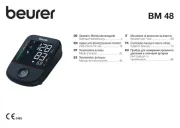
16 November 2024

26 Maart 2024

28 April 2023

28 April 2023

20 Juni 2023

28 April 2023

28 April 2023

28 April 2023
Handleiding Bloeddrukmeter
- Inovalley
- Fakir
- Veroval
- Cresta
- Medisana
- Prestigio
- Technaxx
- Welby
- Dr. Senst
- Rossmax
- Wellhealth
- Soehnle
- A-Rival
- Duronic
- Terraillon
Nieuwste handleidingen voor Bloeddrukmeter
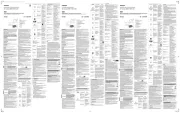
1 September 2025
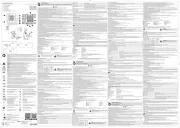
25 Augustus 2025
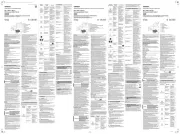
29 Juli 2025
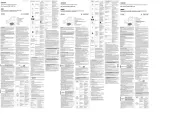
28 Juli 2025
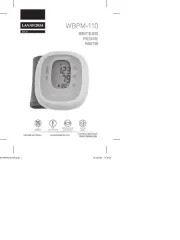
16 Juli 2025
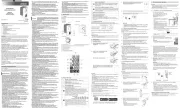
23 Mei 2025
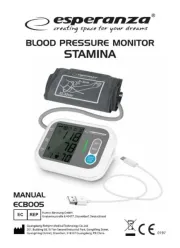
22 Mei 2025
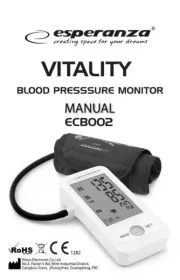
22 Mei 2025
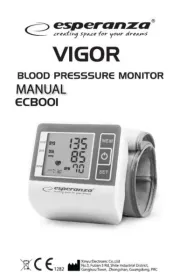
22 Mei 2025
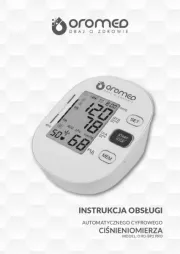
20 Mei 2025